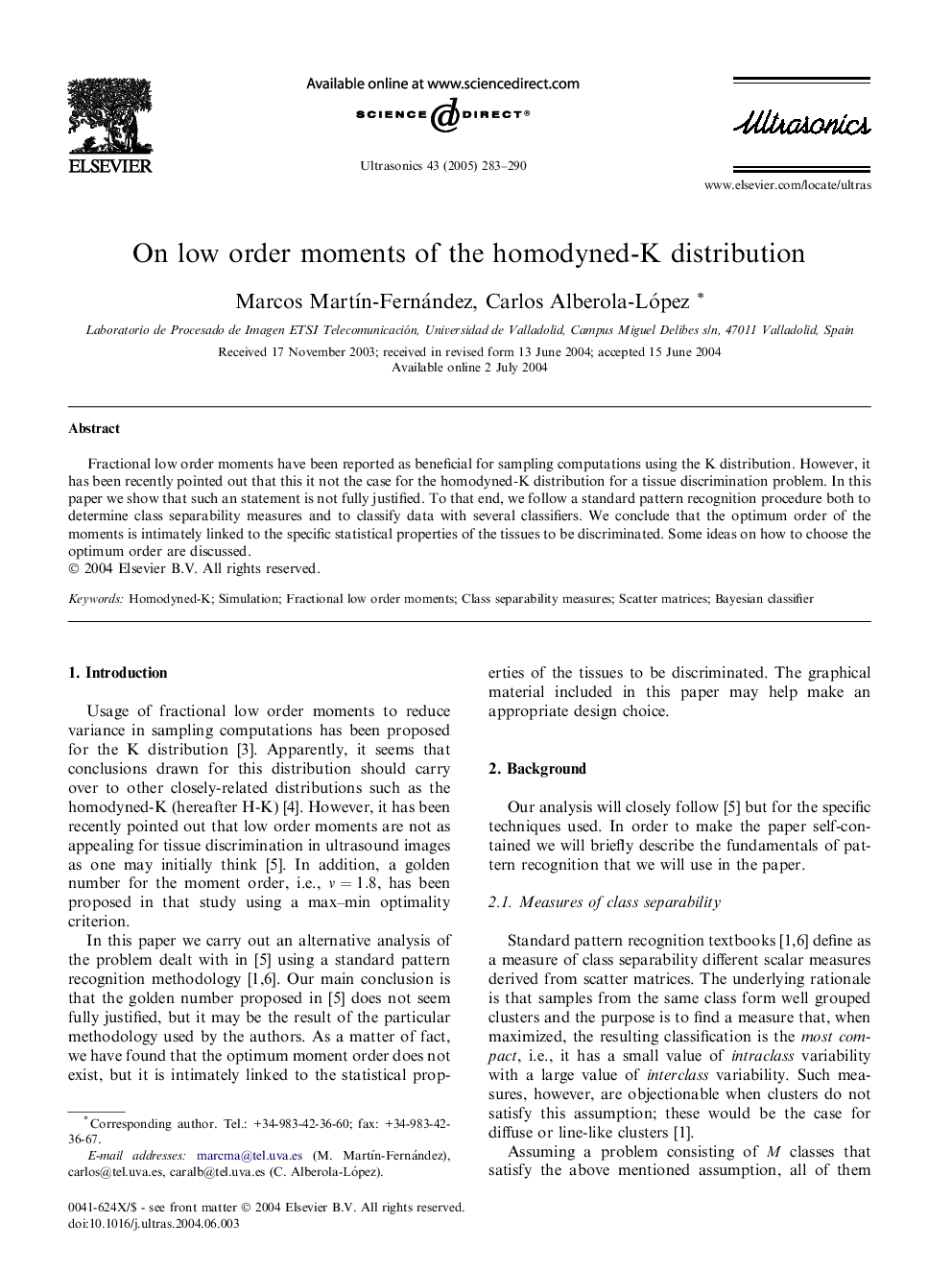| Article ID | Journal | Published Year | Pages | File Type |
|---|---|---|---|---|
| 10690697 | Ultrasonics | 2005 | 8 Pages |
Abstract
Fractional low order moments have been reported as beneficial for sampling computations using the K distribution. However, it has been recently pointed out that this it not the case for the homodyned-K distribution for a tissue discrimination problem. In this paper we show that such an statement is not fully justified. To that end, we follow a standard pattern recognition procedure both to determine class separability measures and to classify data with several classifiers. We conclude that the optimum order of the moments is intimately linked to the specific statistical properties of the tissues to be discriminated. Some ideas on how to choose the optimum order are discussed.
Keywords
Related Topics
Physical Sciences and Engineering
Physics and Astronomy
Acoustics and Ultrasonics
Authors
Marcos MartıÌn-Fernández, Carlos Alberola-López,
